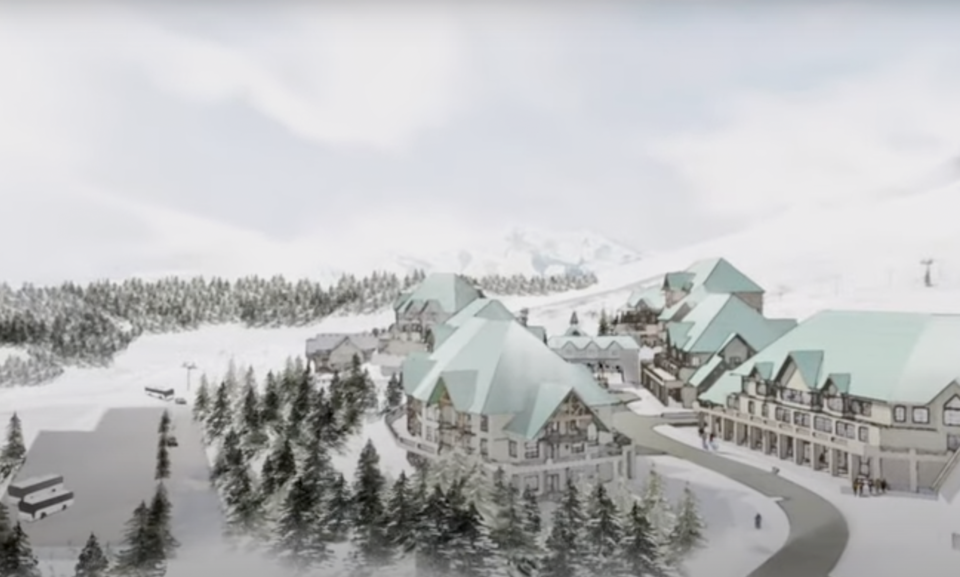Several new all-season resort proposals hope to capitalize on the strong demand for ski experiences witnessed during the pandemic, but all recognize that they’ll amount to nothing without strong Indigenous participation.
“Skiing, particularly in the last number of years, has done remarkably well in spite of the pandemic,” said Walt Judas, CEO of the Tourism Industry Association of BC. “Resorts are busy, and people are coming for an experience in British Columbia, that, particularly this year, they haven’t been able to get elsewhere.”
A lack of new destination offerings in recent years has set the stage for developers to capitalize on demand with new projects, which also promise to lay the groundwork for long-term economic development.
“New product development is always welcome in our sector,” Judas said. “We haven’t had a lot in the province over the past number of years.”
Judas says resorts drive more visitation to B.C. while generating economic impacts that benefit local, often rural, communities.
Destination ski areas, which largely depend on international traffic, have yet to fully recover from pandemic restrictions but several major projects are in the pipeline, Christopher Nicolson, CEO of the Canada West Ski Areas Association, said.
These include the Valemount, Garibaldi and Bridal Veil projects. Other established resorts have also renewed or updated their development agreements with the province to reflect changing markets, including Revelstoke Mountain Resort and Powder King Mountain Resort.
Murray Ridge, a local project near Fort St. James, B.C., reached a master development agreement with the province earlier this year.
“We are talking about communities, not just an attraction,” Nicholson said of new ski hill plans. “It’s far more sophisticated, and far more long term – which is a good thing when you’re looking at rural B.C. and the opportunities the mountain communities provide.”
The province’s master development agreements with resort developers not only deliver in-season benefits but leverage the province’s natural assets for economic good, Nicholson explained.
“The ski area commits to building recreational facilities – such as chairlifts – and the trade-off is they are able to develop the land base,” he said.
The year-round nature of many resorts today reflects both a diversification of operations and a hedge against more variable weather patterns that has led to the development of complete communities.
This was seen at Big White near Kelowna, which saw an influx of residents during the pandemic. Demand for recreational property across the province has boosted property values, even with a sharp rise in interest rates over the past year.
Royal LePage’s recreational property report, released in late March, pointed to double-digit price increases for apartment properties in recreational areas across the province, led by Invermere at nearly 23 per cent.
“They’re very much mountain communities,” Nicholson said of resorts. “The value of the land has increased, but so too the year-round nature of it.”
Indigenous approval
But the future establishment and growth of such ventures will occur in partnership with local First Nations.
While feasibility studies often look at the economic and environmental impacts, as well as net community benefits, the support of First Nations now has a higher profile.
“That’s ultimately a big goal,” Judas said.
The frontrunner in the next wave of projects is Valemount Glacier Resort near Jasper National Park, where the proponents signed a master development agreement with the province in 2017 after extensive work with Simpcw First Nation laying the groundwork for what could ultimately be North America’s biggest ski area.
While construction faces hurdles, the master agreement has set the pace for two other major projects seeking a green light from the province: the Garibaldi resort development at Squamish and the Bridal Veil development east of Chilliwack.
Garibaldi at Squamish is in the pre-master plan review stage, according to the province, with the proponent working together with the Squamish Nation on secure its environmental assessment certificate. The project website estimates the start of construction in 2025 and opening in 2028.
Bridal Veil is in the preliminary stages of a major project review for its project on 12,000 acres. The developer, Bridal Veil Mountain Resorts Ltd., expects to begin the formal application process this summer, including master plan development.
“This is one of the most complex Indigenous areas within the province,” said Jeff Wilson, executive vice-president of Bridal Veil, who envisions the project becoming Canada’s first all-season mountain resort designed, owned and operated in partnership with First Nations. “We are making very strong inroads within the First Nations communities with chiefs and council and with business development leaders within those communities.”
Bridal Veil sees the project as restoring pride of ownership to the local Sto:lo people, who will be stewards of the land as well as economic beneficiaries.
“It provides a mechanism where they can assume a stewardship role,” Wilson said. “Pretty much every First Nations [person] living on reserve today could have a viable career option within a short drive of their reservation home. That alone is a massive game-changer.”



